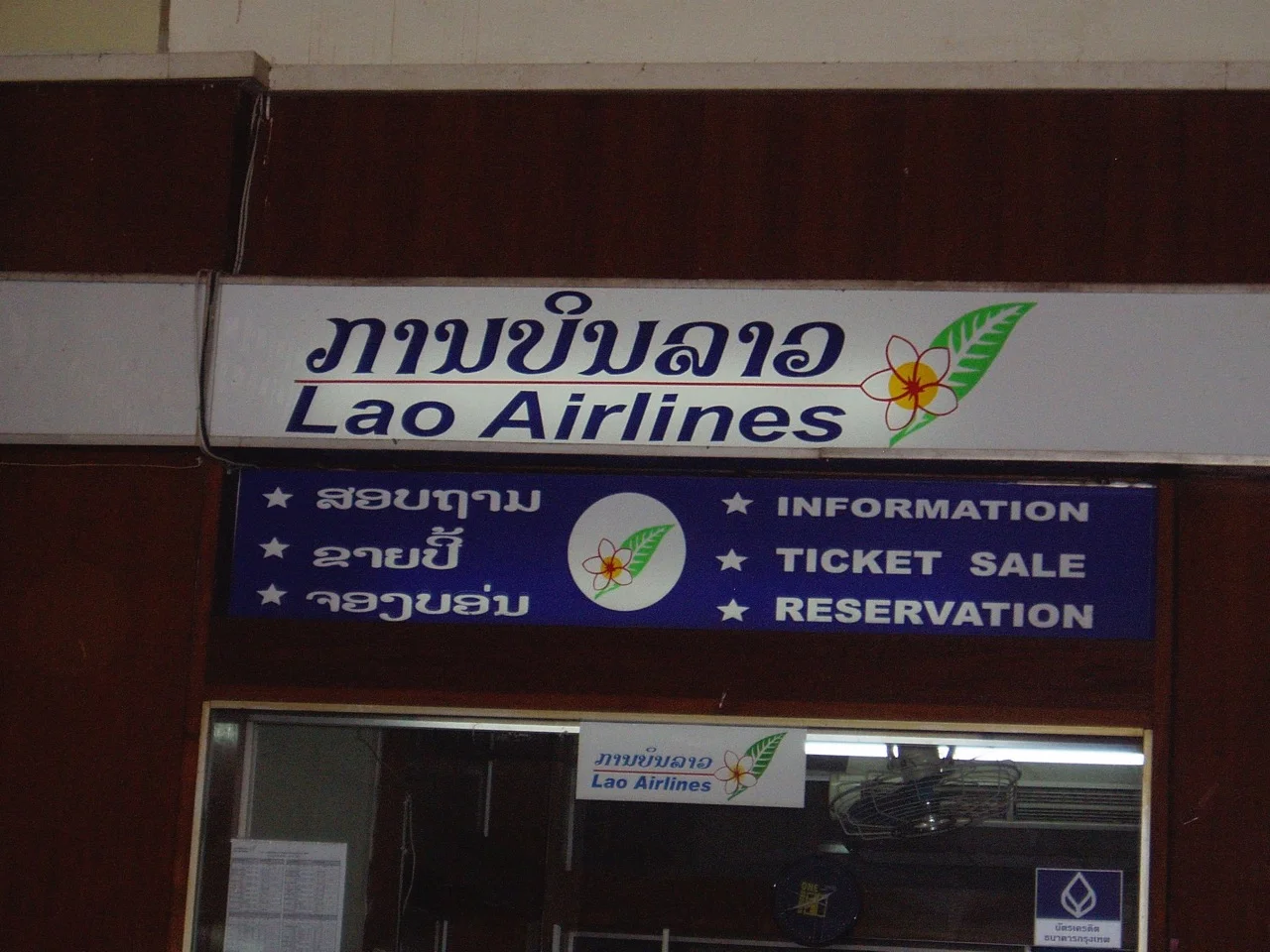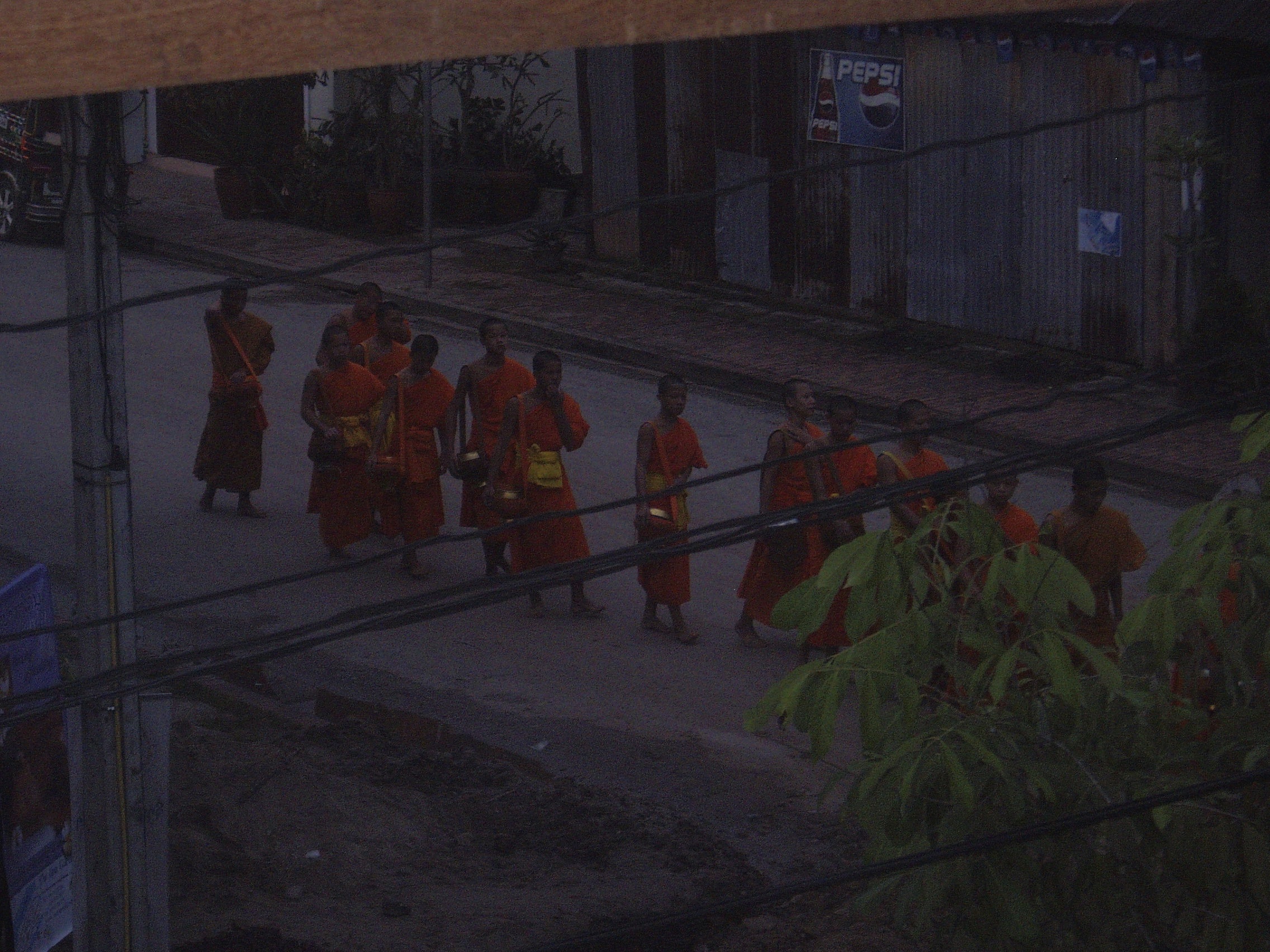Laos- October, 2005
This is about a trip we took to Laos in October, 2005. I’m writing this based on memory and a video I took.
We hadn’t planned in advance to go to Laos, but since we were in Vietnam we decided we’d hop across the border and see a new country. We arrived in Vientiane, the capital of Laos, after flying Lao Air 400 miles from Hanoi. Laos, officially known as the Lao People’s Democratic Republic, is a small landlocked country in Southeast Asia and is one of the few remaining Communist countries.
With its population of about seven million, Laos is much smaller than its neighbor, Vietnam, which, in 2005, had a population of ninety million. The people in Laos are more religious, mostly Buddhist, and the influence is much more Indian than Chinese (the “Indo” part of “Indochina”). Wats and stupas, which are temples, are everywhere.
It seemed there was no pollution in Laos as compared with Vietnam where, in the larger cities like Saigon and Hanoi, the pollution was intense. In Vietnam, in one year they wear out their motorbike and car horns, whereas in Laos we never heard a horn honk. Crossing a street in any city in Vietnam means risking your life; in Laos it was almost like California motorists gave pedestrians a wide berth. Laotian people were very gentle, they would greet you with a soft “sabadee” (hello, how are you) and then clasp their hands and bring them to their chin, as in a prayer. Just about everyone did that by way of greeting, which was most welcoming.
The weather in Laos was nicer than Vietnam because the skies were almost always blue and you could often see the sun. When we were in Vietnam much of the country was being affected by a large disturbance over the South China Sea and the sky was often murky.
The food was good, maybe not as sophisticated as Vietnamese food but lots of excellent and inexpensive French restaurants, at least in Vientiane. Sticky rice is a Laotian staple, served with every meal. Most popular dishes are larb, a spicy mixture of marinated meat or fish, and tam mak hoong, a spicy green papaya salad. And of course baguettes are found everywhere, a holdover from when Laos was part of French Indochina. The beer is called Beer Lao, one of the best beers in Southeast Asia, always served ice cold and inexpensive.
This little country has the distinction of being one of the most bombed countries in the world, by the U.S. of course. In the 1970's the US bombed the hell out of the Ho Chi Minh trail, which is the way the Viet Cong were moving supplies south, and much of the trail went through Laos. Also, U.S. B-52 bombers returning from bombing runs over Hanoi were told not to bring any bombs back to their bases in Thailand, so they dropped any remaining bombs in Laos. Not nice and amazing these people still like Americans.
The currency is the kip (pronounced keep). I changed one hundred US dollars at the airport and got a huge stack of 5000 kip bills, which were each worth fifty cents, at the exchange rate of 10,800 kip to one dollar. The main transportation is by tuk-tuk, as in Thailand, very small and old three-wheeled motorcycles, with compartments in the back for several people. They chug along and the going rate was about one dollar to go anywhere you want. That's was for foreigners, locals paid only fifty cents.
From Vientiane we went to Pakse (means mouth of the River Se), the second largest city in Laos near the Cambodian border, and a ten hour drive. Our reason for going to Pakse was to meet up the next day with a small river boat for a two-day cruise on the Mekong River. After that we’d fly to Sim Reap in Cambodia to see Angor Wat, the mother of all temple complexes. We were looking forward to Cambodia; travelers we had spoken with said it's a must destination.
Getting from Vientiane to Pakse wasn’t easy. It’s about four hundred miles, there were no flights available, and the bus service wasn’t good. We made a deal with a car and driver to take us on the roughly ten-hour trip. All went well for the first few hundred miles and then the car broke down literally in the middle of nowhere. There were no service stations or anything else for many miles and no phone service. We had a boat to catch the next morning and didn’t want to be late. So I got in the middle of the road and flagged down a passing car. They didn’t speak English but I got the driver from our first ride to explain our situation and I offered them twenty dollars, a lot of money in Laos, to take us to our hotel in Pakse. It worked and we got to our hotel that night.
Our river boat cruise was on the boat Vat Phou. Misti learned about the cruise in Lonely Planet and booked it in Vientiane. It turned out to be a wonderful experience; eight passengers with a crew of twenty, on a hundred foot teak boat that was converted from a cargo boat. We were the only Americans, other passengers were from UK, South Africa, Belgium and Spain and luckily English was the language of choice. I got to practice my Spanish with the couple from Spain who also spoke French, which is the second language in Laos. It was a very pampered experience, perhaps better than our boat trip in Burma on the Irrawaddy five years ago. I recommend it highly.
The next morning we learned that Laos Air had canceled our tickets to Siem Reap in Cambodia, so we decided to go north instead to Luang Prabang, which is the ancient capital of the province, on the confluence of the Mekong and Nam Khan Rivers.
Flying on Laos Air was an experience. It was an old and small French prop plane that bounced like crazy upon landing. There was almost no security and I doubt that terrorists even know this country exists. Fares are cheap, although they do have a tendency to cancel flights if there aren’t enough passengers.
We decided on Luang Prubang because we heard so many good things about it from fellow travelers. Maybe fate was intervening by our tickets to Cambodia being cancelled because we fell in love with Luang Prubang and it would have been a shame to miss it., It had recently been named a world heritage site and UNESCO had put up funds to restore the old French Colonial buildings. It had all the charm of Laos, with the amenities that come from an emerging tourist trade; upscale hotels, great restaurants and nice crafts, all on a small and reserved scale. I think the world will soon discover this wonderful place from traveler word of mouth, and the hordes from the US and EU will descend upon it. How nice to have discovered it before it’s ruined by massive tourism.
Every morning, at about 6 am or when the sun rises, several hundred monks clad in orange robes, walk down the main street for their daily alms walk, called the Buddhist Alms Giving Ceremony. Both locals and tourists line the streets and offer the monks handfuls of rice or fresh fruit, which will be their one meal of the day (side note: not many fat monks). This is a genuine daily ceremony that has been ongoing for many years and is not for the benefit of tourists, although tourists are welcome to participate with the food offering.
In Luang Prubang we stayed at the Three Nagas Hotel, on the main street in Old Town. A naga in the Hindu religion is a serpent that takes you to heaven. We had dinner in the hotel our first night, three excellent dishes and a liter of red wine, all for eight dollars, can’t beat that.
The French may have done some nasty things in years gone by, but god bless them for their colonial legacies in places like this. The coffee and croissants were as good as Paris at about a tenth the cost. One night in Luang Prubang we ate at L'Elephant, a very up-market French Restaurant which can rival most in France, with the meal costing about $15.
A highlight of Luang Prubang was the Night Market. Every evening, just before sunset, vendors set up their wares in small stalls lit with colorful lanterns. A lot of touristy stuff, but it was fun to walk the aisles and look for things of interest. Also, the Night Food Market, with all sorts of delicious street food, was at the end of the street.
There were few Americans in Laos, mostly Europeans especially from Scandinavian countries and also Brits and Russians. Even though communism is no longer the driving force in Russia, Laos is one of the few communist countries in the world, and I think many Russians still identify with communism and when the USSR was one of the world’s two superpowers. Tourists were mostly younger backpacker types, although there was also a smattering of older folks who stayed in the nicer hotels and ate in the expensive French restaurants.
The Lao people are friendly, polite, honest and have other nice attributes that seem to be in short supply in our part of the world. Their attitudes were addictive and I suffered some reverse culture shock when I returned to the US. About 90% of the Laotian population is Buddhist, and many practice and believe their religion.
Having someone clasp their hands together as if in a prayer, as a greeting, goes a long ways toward a feeling of passivity and peacefulness, and it was genuine. Perhaps as more tourists arrive, and bring their dollars and euros, this lovely city and country may succumb to modern world change and loose its simplicity and charm. Hopefully not!
Internet was everywhere in Laos, fast and very cheap, although now I’m sure wireless is everywhere. I often found refuge from the heat and humidity in an air- conditioned internet café, and they all had cold beer. We were in Southeast Asia for about three weeks and the weather had been pretty much uniformly hot and humid. I realize how lucky we are to live in a cool and dry California climate. Sweating isn't a fun thing, and changing your shirt twice a day makes for lots of laundry. Fortunately, in Laos we were able to wash untold amounts of clothing for just a few dollars, so we did laundry on a regular basis.
From Luang Prubang we flew back to Vientiane, and then a very long trip home by way of Saigon with a long stopover in Tokyo, where we took a hotel to get a six hour rest. Total travel time home was about forty-eight hours, and our bed seemed like heaven when we finally got home.
Art Faibisch
April 6, 2017































